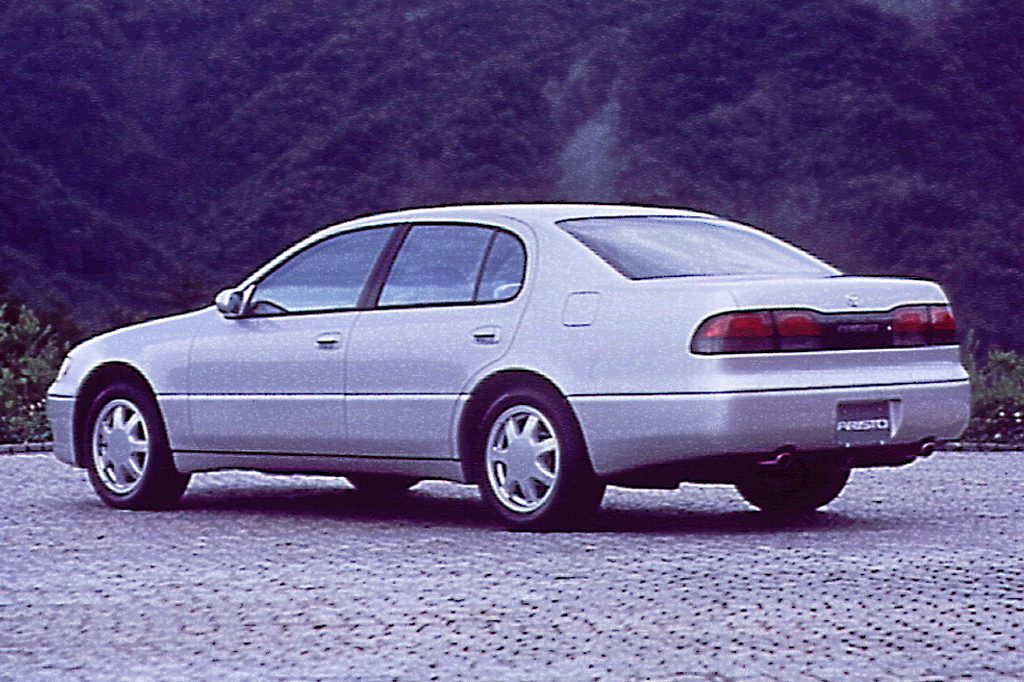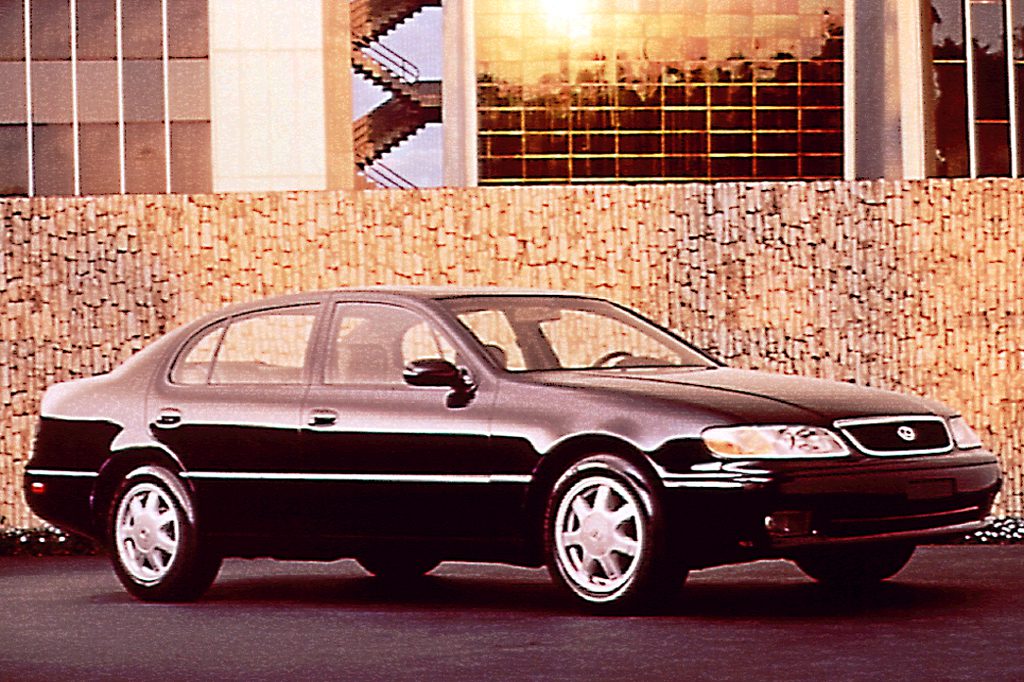| Premium midsize car; Built in Japan |
|
|
| Good condition price range: $2,200 – $4,800* |

1993 Lexus GS 300

1993 Lexus GS 300

1993 Lexus GS 300

1993 Lexus GS 300 interior

1996 Lexus GS 300
| Pros: |
|
| Cons: |
|
This deft-handling, if expensive, premium sedan is definitely worth a look. But before buying, also consider the BMW 3-Series or 5-Series, Infiniti J30, Cadillac Seville, and Mercedes-Benz C-Class or E-Class. Except for the Seville, all of those are rear-wheel drive, like the GS 300.
Overview
Introduced in spring of 1993 as a late ’93 model, this rear-wheel-drive 4-door sedan slipped right into the spot between the costly flagship Lexus LS 400 and the entry-level ES 300. A 3.0-liter inline 6-cylinder engine made 220 horsepower, driving an electronic 4-speed automatic transmission. Standard equipment included dual airbags, antilock all-disc brakes, a power tilt/telescopic steering column, and CFC-free air conditioning with automatic temperature control.
Yearly Updates
| 1994 GS 300 Nothing of consequence was new for 1994. |
| 1995 GS 300 No change was evident in this year’s GS 300 sedan. As before, only one model was marketed, with only a handful of available options. |
| 1996 GS 300 A new 5-speed automatic transmission went into 1996 models–a first from Lexus. Other changes included new taillights and rear badging. |
| 1997 GS 300 Nothing was new for this generation’s final outing. |
